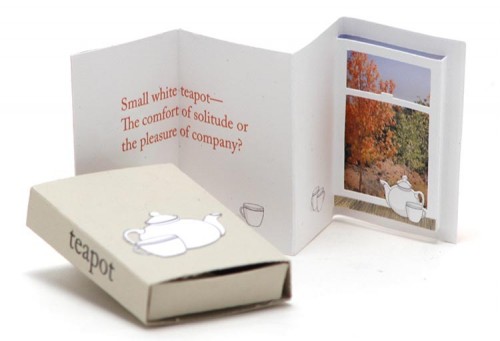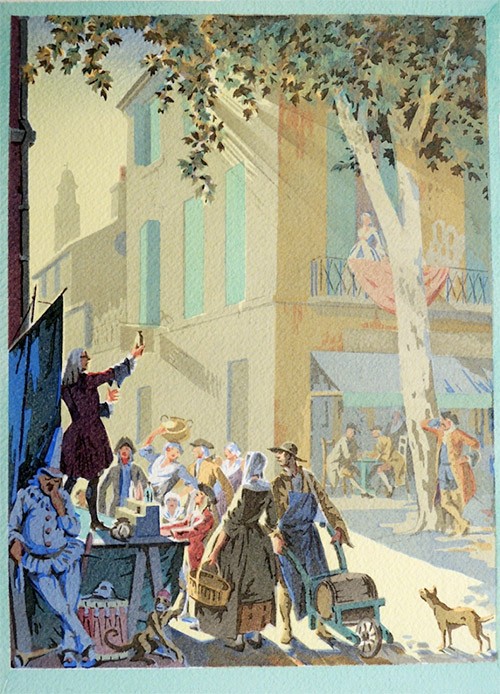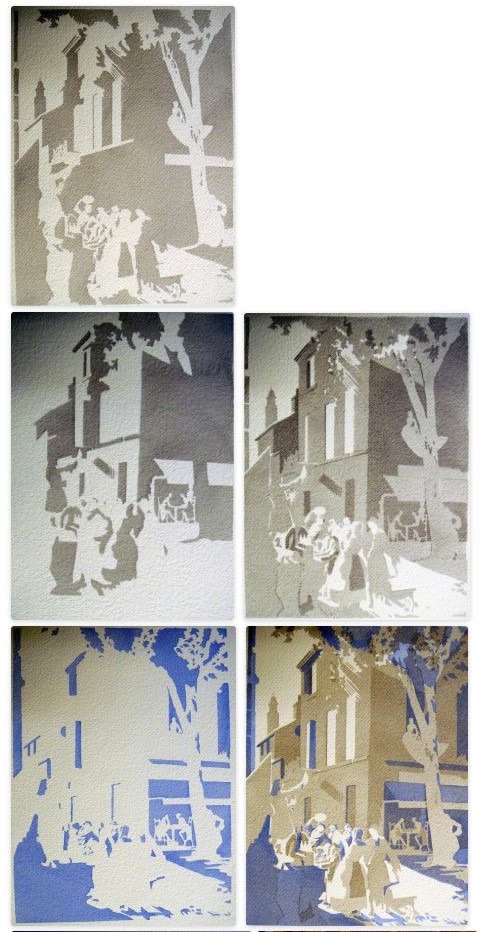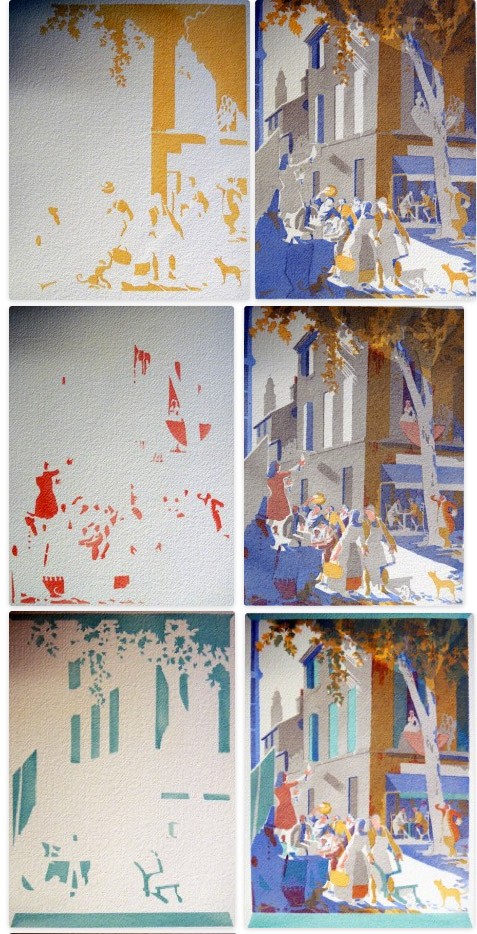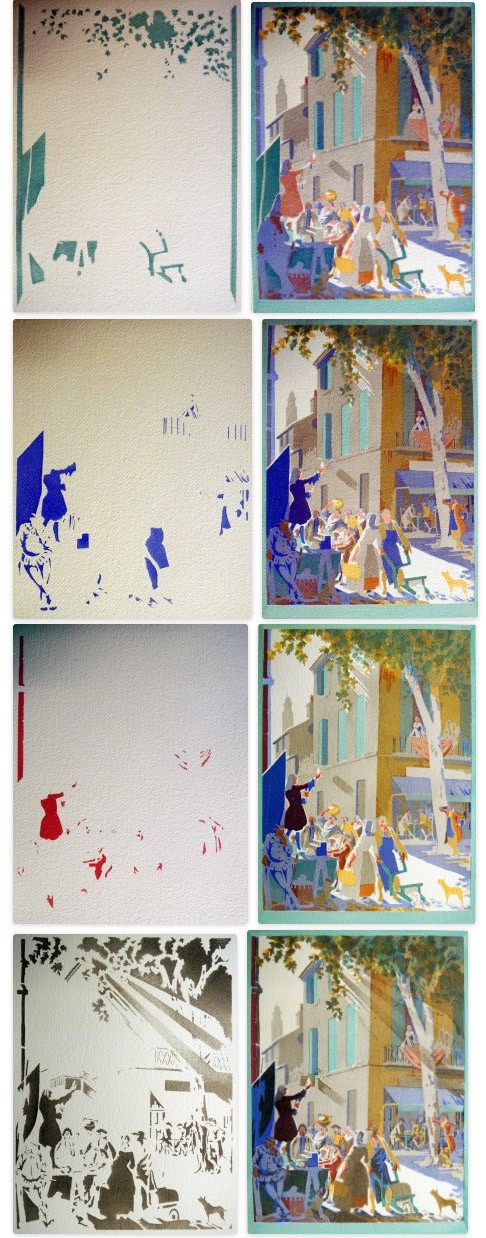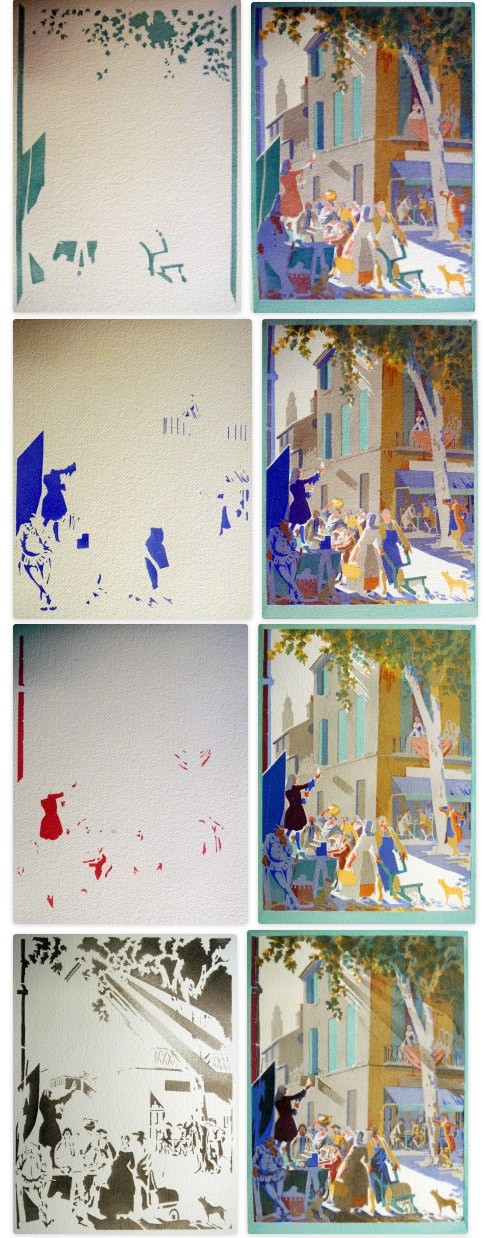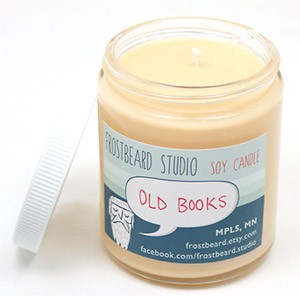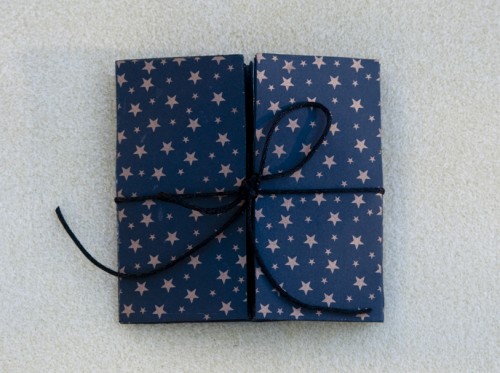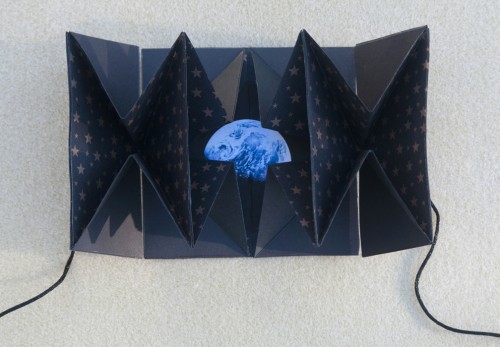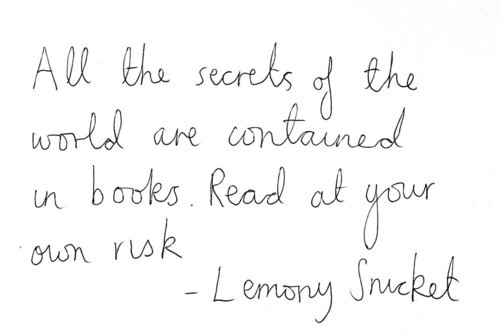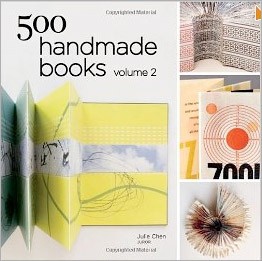Several weeks ago I had coffee with my friend Barb. She’s been taking a bookmaking class at the local community college and was telling me her ideas for books she wanted to work on through the semester. First on her list was a book about tea—she’d been meaning to do something with some research she’d done and thought this was the perfect opportunity. She also had a book to show me, called Matchibako: Japanese Matchbox Art Of The 20s & 30s. It’s full of fun pictures and a lot of background information.
![]() As I drove home, I thought about the tea haiku and pop-up I did for my book about fall, One More Blanket on the Bed. I’ve been meaning to turn that pop-up into a card or something but haven’t gotten around to it. I guess I couldn’t get very excited about editioning a card. But I did get excited about pairing the pop-up with a matchbox.
As I drove home, I thought about the tea haiku and pop-up I did for my book about fall, One More Blanket on the Bed. I’ve been meaning to turn that pop-up into a card or something but haven’t gotten around to it. I guess I couldn’t get very excited about editioning a card. But I did get excited about pairing the pop-up with a matchbox.
![]() Here’s the result. It’s been a good project to celebrate the start of fall. The book is 1-3/8″ wide by 2″ tall and the handmade matchbox is 1-1/2″ x 2-1/8″. See more pictures here.
Here’s the result. It’s been a good project to celebrate the start of fall. The book is 1-3/8″ wide by 2″ tall and the handmade matchbox is 1-1/2″ x 2-1/8″. See more pictures here.
